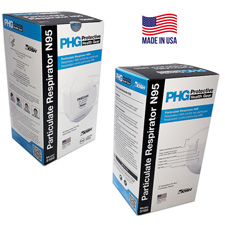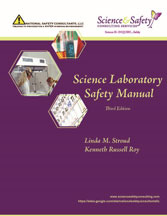



Find all of your laboratory and workplace safety supplies at Safety Emporium!
 REACH |
 Glossary Index |
 Respirator |
| MSDS Topics |
Free Sites | FAQ's | Regulations | Glossary | Software | Suppliers |
| Books | Forum | Poll | Fun stuff | Quiz | Store | |
| Understand your MSDS with the MS-Demystifier | Search ALL our MSDS info | |||||

Get your PPE such as NIOSH-approved N95 masks and face shields from Safety Emporium.
A reproductive toxin is a substance or agent that can cause adverse effects on the reproductive system. The toxic effects may include alterations to the reproductive [sexual] organs and/or the endocrine system (which includes the thyroid and adrenal glands). These effects can occur in both men and women.
OSHA defines reproductive toxins as "Chemicals which affect the reproductive capabilities including chromosomal damage (mutations) and effects on fetuses (teratogenesis).
Exposure to reproductive toxins may cause one to become infertile or to have difficulty conceiving a child. Reproductive toxins may affect the parent, developing child (even after birth), or both.
The American College of Occupational and Environmental Medicine says:
"Characteristics which distinguish reproductive toxicity from other toxic effects include:
In response to potential reproductive hazards and fetotoxins, the state of California (USA) passed a measure called the The Safe Drinking Water and Toxic Enforcement Act of 1986, which is better known by its ballot name, Proposition 65. This act attempts to regulate the use of potential fetotoxins and reproductive hazards. Further information can be found in the links below.
Safety Data Sheets are required to disclose reproductive effects. Reproductive toxic effects are not always irreversible. It can be difficult to determine if workplace exposure to a material is the cause of infertility because fewer than 1,000 chemical agents (out of 50,000,000+ known chemicals) have been studied for the reproductive effects.
When working with materials that are potential reproductive toxins use standard (and common sense) precautions such as fume hoods, appropriate respirators and other personal protective equipment (PPE). Better yet, see if you can find a safer alternative to using that particular material!

This guide to safer laboratories is available from Safety Emporium.
See also: carcinogen, cytotoxin, fetotoxin, heavy metal, mutagen.
Additional definitions from Google and OneLook.
Entry last updated: Sunday, January 8, 2023. This page is copyright 2000-2025 by ILPI. Unauthorized duplication or posting on other web sites is expressly prohibited. Send suggestions, comments, and new entry desires (include the URL if applicable) to us by email.
Disclaimer: The information contained herein is believed to be true and accurate, however ILPI makes no guarantees concerning the veracity of any statement. Use of any information on this page is at the reader's own risk. ILPI strongly encourages the reader to consult the appropriate local, state and federal agencies concerning the matters discussed herein.